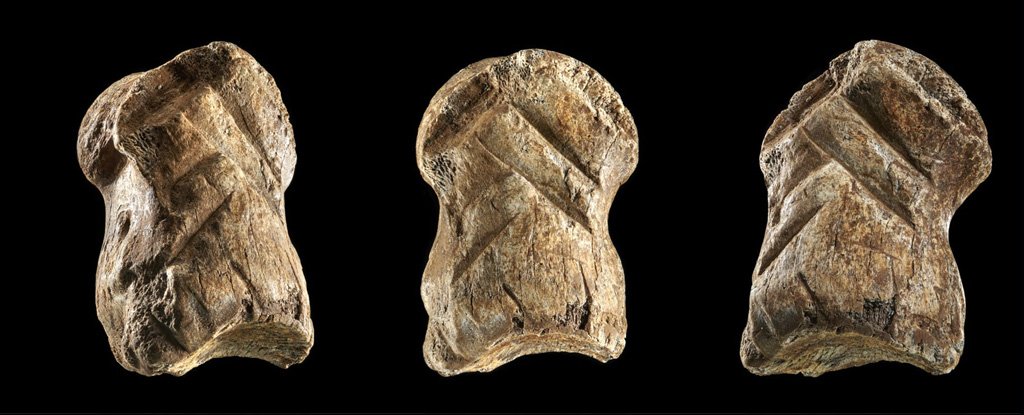Beautiful Bone Carving From 51,000 Years Ago Is Changing Our View of Neanderthals [View all]

Engraved giant deer phalanx. (V. Minkus/Leder et al., Nat. Ecol. Evol., 2021)
CONOR FEEHLY 6 JULY 2021
As humans, we like to think we have some pretty unique traits in the animal kingdom. Language enables us to communicate efficiently with one another. Culture preserves and accumulates knowledge through generations. Technology and tools help us solve problems. Symbols and art reveal clues about our complex experiences.
A growing body of evidence suggests the traits we tend to assume are unique to modern humans, may once have been present in our hominin cousins, too.
Scientists have now announced the discovery of a 51,000-year-old engraved giant deer bone which was produced by Neanderthals in the Harz Mountains, now northern Germany. The carvings on the deer bone are precisely and artistically arranged into chevron patterns.
Previous evidence of symbolic and artistic traits in Neanderthals has been scarce, but the new findings raise exciting questions about how complex Neanderthal behavior might truly have been.
